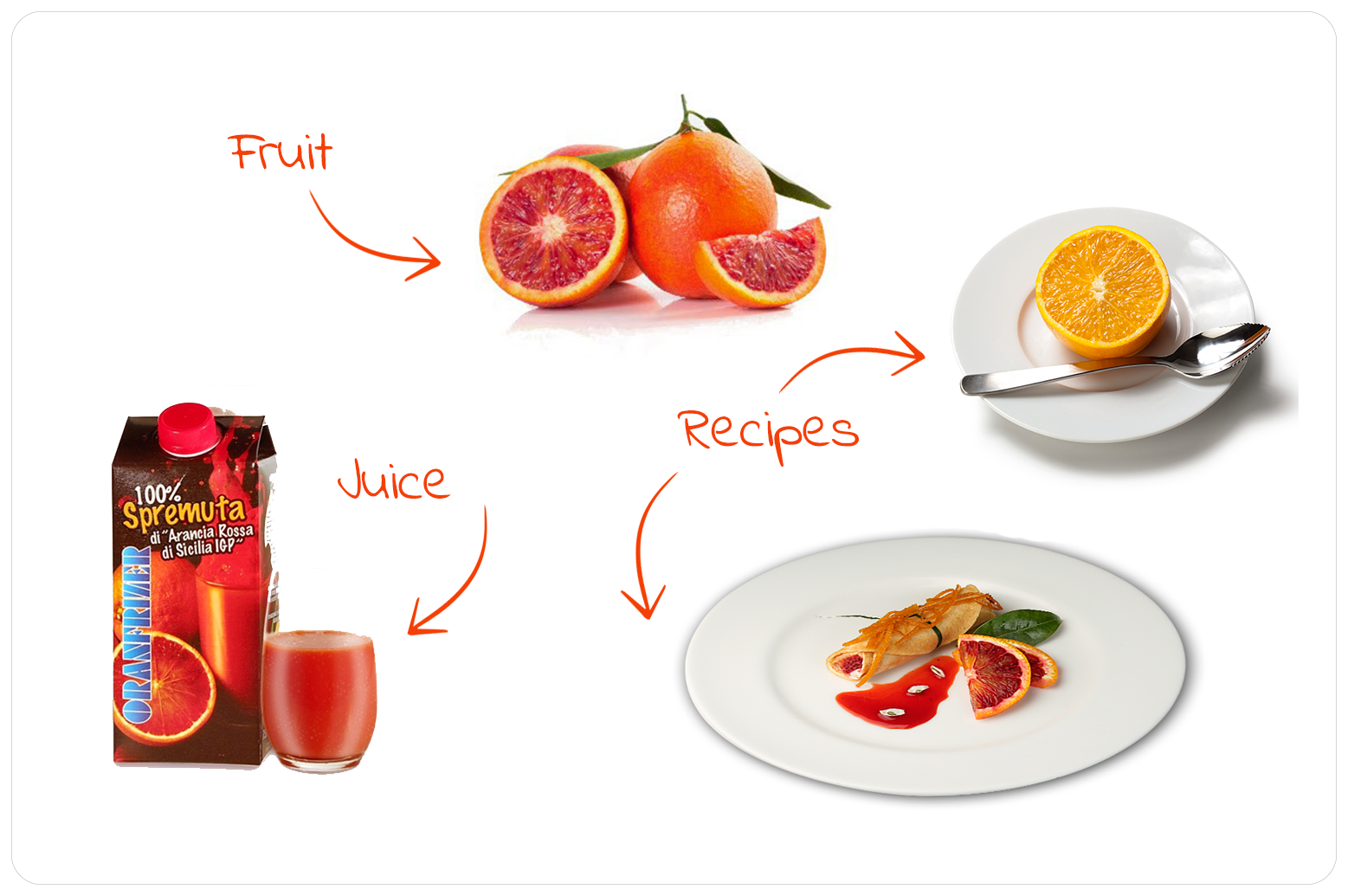Oranfrizer welcomes and gathers >what nature intended for it.
The citrus groves located on the slopes of the Etna volcano, in the heart of Eastern Sicily, these have always been the main growing areas.
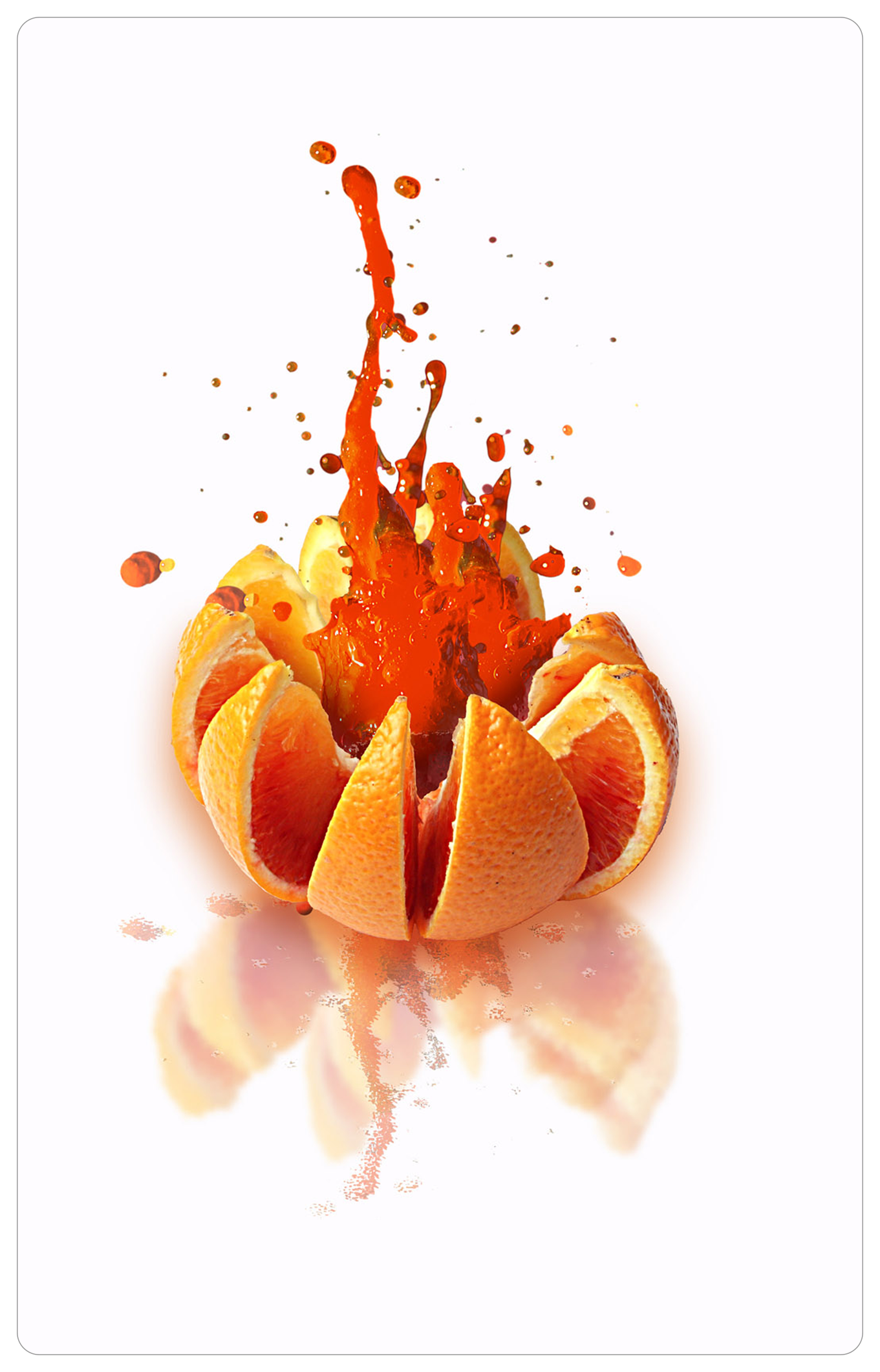
For decades they have gifted good fruit thanks to the particular climatic conditions, the thermal outputs, the constant agronomic cures and to the methods of production adopted and constantly updated. The trees are for ever green, the orange blossom blooms gloriously, the oranges continue to ripen, red like the lava.
The blood orange cultivated in Sicily is distinctive, has a particular taste, is good to eat, a natural source of Vitamin C in fact it contains about 60 mg per 100 grams of edible portion (75% of the Nutritive Reference Values), is aesthetically singular due to the characteristic pigmentation of the peel, pulp and juice.
Its daily presence influences a great deal on the economy of Sicily and may be defined as a healthy symbol of this island which is known all over the world. It has been the subject of study for researchers, doctors and nutritionists. It is the fascinating muse of he who was born or has made landfall on our land. It is found in the art of cooking sweets, in paintings, in literature, popular medicine and herbalists’ elixirs. Its essence rises through musical notes, arises in cinematography and in Gastronomy (ORANGE)
Oranfrizer is an integral part of this world, in which the blood orange is a protagonist. During the seasons of more than half a century we have multiplied the extent of cultivated areas. We have innovated production technology and packaging processes. We have contributed to bringing to the field the results of Sicilian research by grafting new scions. In order to re-arrange consumer seasons, we started the process of transforming blood oranges into 100% fresh juice, we have invested in cultivation projects and food education, favouring the sharing of knowledge. Each of Oranfrizer’s important actions has been oriented towards the analysing the value of the blood orange.
Those activities which for many others has remained as a traditional family production process, has for the brothers Nello and Alessandro Alba has been transformed into a continuous company expansion.
Oranges with red flesh are distinguished by excellent sensory properties; the intense and delicate aroma, the brilliant red colour, the sweet/acidic taste and their content of substances of benefit to the body.
Blood oranges have an elevated level of vitamin C,of flavonoids and of hydroxycinnamic acids compared with common oranges
In 100 ml of juice:
- Blood oranges contain 60 mg of vitamin C and have a total anti-oxidant activity (TAA) of 310 mg of vitamin E equivalent
- Common oranges contain 40 mg of vitamin C and have a total anti-oxidant activity (TAA) of 112 mg of vitamin E equivalent
Source: From a study on the blood orange, Prof.ssa R. Marchelli, Department of organic and industrial chemistry at the university of Parma.
With a single Tarocco blood orange (150 g), it is possible to take in the daily recommended quantity of vitamin C, that is some 105 mg.
Source: LARN, IV Revision 2014 - The indicated datum for the Italian male population.
Vitamin C increases the human body’s resistance against various chemical, physical and environmental agents. It’s value for reinforcing the immune defences against viruses and bacteria is also known, and building up a good reserve for the winter means looking after one’s self. It favours deposits of calcium and phosphorous in the bones and teeth and is very important for the diet of pregnant and menopausal women, helping prevent osteoporosis.
Vitamin C favours the absorption of iron. It is also an ally against anaemia and furthermore, smokers are advised to take a regular dose of vitamin C in order to reduce damage caused by nicotine. The flesh of oranges is often used is often used in masks for preventing premature aging in the skin. Their juice, in addition to being a very tasty panacea to be consumed at any time of the day, is also an important ingredient for astringents and tonics.
With regard to cosmetics, the consumption of blood oranges is highly recommended because its elevated vitamin C content, with its anti-oxidant actions, fights wrinkles, stimulates anti-inflammatory actions and therefore helps prevent spots and skin irritations. It is fundamental for the natural production of collagens; a necessary ingredient for elasticity of the skin.
The juice of blood oranges is very well known and appreciated for its vitamin C and anthocyanin content, but these super fruits also contain many other beneficial substances; it has a good 441 composites.
Amongst these are 14 different vitamins and 67 mineral slats, amino acids, enzymes, carbohydrates, carotenoids, flavonoids, etc. Thanks to the synergism of this precious mix of bio-active substances, today not yet artificially reproducible, oranges have demonstrated anti-oxidant, anti-inflammatory, anti-dysmetabolic, which appear to be useful for the prevention of various non-transmittable chronic pathologies such as obesity, diabetes, hypertension, dyslipidaemia and cardio-vascular illnesses.
Thanks to the low sodium content, the blood orange and all citrus fruits are recommended for all who suffer from water retention. Also present are organic acids (citric, tartaric and others), useful for reducing acidity in the urine and therefore the risk of kidney stones. Amongst other valuable substances contained in some citrus fruits there are also carotenoids, belonging to the anti-oxidants group and, through metabolism, they transform themselves in to vitamin A.
Citrus fruits activate some seventy polyphenols, amongst which hesperidin. These tone the blood vessels, reducing their permeability and preventing the formation of cellulite. Red oranges are a natural source of valuable sugars, immediately available to our muscles and our brains. The mineral salts contained in citrus fruits, amongst which potassium, make them suitable allies for re-integrating salts lost during sporting activities of physical effort in general.
Source: Francesco Leonardi, nutritionist and national secretary of FeSINA of Florence (Federation of the Italian Nutritional Society)
The fruits of nature from our hands to yours.
In Sicily, we pick blood oranges one by one, using special scissors which become one with the hand. The cut is quick and precise, each farmer being very careful not to damage the fruit and to protect the branc.
Each orange is the result of a year’s work.
We take care of nature every day. The citrus grove activities start in March when the trees, after the last crop, are fertilized and pruned.
Pruning, that being the cutting out a number of the tree’s branches, is very important for their wellbeing. It helps the plant to distribute its sap more effectively and allows the sun and air to penetrate the foliage.
The orange trees are evergreen, each as high as 3 metres, the trunk branching out into 4-6 main boughs.
The leaves which fill the crown are very numerous, oval, oblong, and dark green in colour.
As soon as the blossom starts to appear on the trees, care must be taken to protect the tree from ants and other very small parasites (aphids and mealy bugs).
Zagara, the name of the orange blossom from which all the fruit emerge. Some 3500 blossoms flower on each tree, a whole lot.
Each flower has 5 petals, “white, snow white and very perfumed”. Only 300 or so of these blossoms are transformed into really good blood oranges on each tree.
In organic farming, it is the aggressive insects which look after the plant, flower and fruit, as they keep the damaging parasites at bay. Over most of the citrus groves, in order to guarantee the crop, integrated pest management methods are used. Our lands do not undergo weed killer treatments and the natural maturing of fruit is spared heavy chemical support interventions.br /> In June, small green fruit appear on the trees. That is the time to irrigate and to follow the growth, and the well-being of the trees and oranges, with care. During the Autumn months, the fruit pass from green to orange and then, finally in December, the oranges start to reveal their extraordinary red colour. The blood orange for ages has been the red fruit of Christmas, queen of the Winter, cure-all for the coldest months of the year.
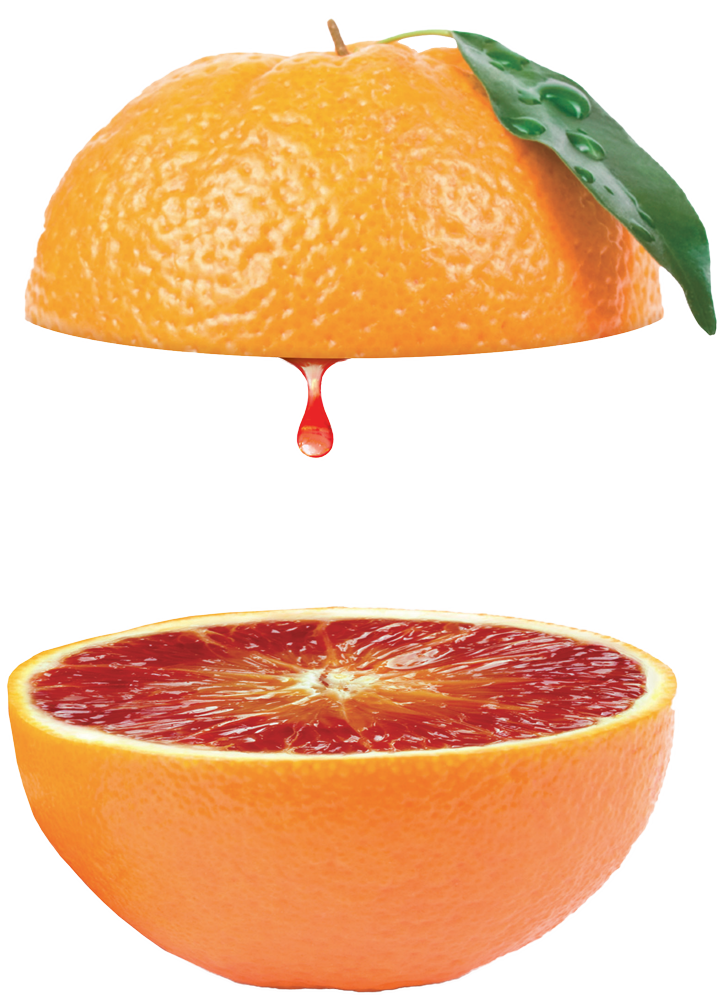 Today, thanks to research, we have selected numerous varieties of blood orange with different ripening periods. We planted them and now we can start to gather from the trees the first nutrient red fruit from the trees at the start of the month of December, and to continue on until full Spring, during the month of May. The harvesting dates in the citrus groves are never the same, they change and follow the natural ripening path of the fruit.
Today, thanks to research, we have selected numerous varieties of blood orange with different ripening periods. We planted them and now we can start to gather from the trees the first nutrient red fruit from the trees at the start of the month of December, and to continue on until full Spring, during the month of May. The harvesting dates in the citrus groves are never the same, they change and follow the natural ripening path of the fruit.
The orange, inside and out
The blood orange is a fruit above all made up of the juice which makes up 50%. 20% is flesh divided into septums which separate the segments. At times there are pips. The remainder, that is some 30%, is the peel.
The varieties: Tarocco, Moro and Sanguinello
Oranfrizer is the leader on the production and commercialization of all the citrus fruits of Sicily. The oranges, in particular the blood varieties are taste bombs, the colour inherited from Mount Etna gives them a sumptuous look, and their flavour reveals their richness.
The Tarocco orange, the most prized, hides at the centre of its flesh light hues of red which gives it a balanced flavour, between bitter and sweet. It houses an elevated content of vitamin C.
The Moro orange is the most pigmented, with the flesh being completely red and particularly succulent and its taste is a marvel. It has the highest content of anthocyanin.
The Sanguinello orange takes its name from the sanguine mottling radiating in its flesh and which impart sweet notes to the flavour, barely overlaying the sharp notes. This also has an excellent vitamin C content as well as of anthocyanin.
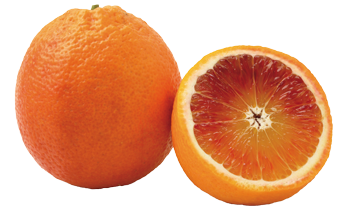 Tarocco
Tarocco
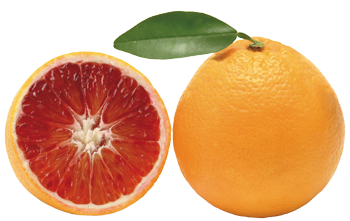 Moro
Moro
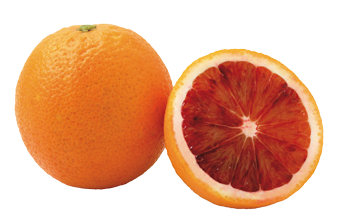 Sanguinello
Sanguinello
The flesh is naturally protected by the rind which is a real suit of armour.
The red oranges ripen in full Winter and are generated by the trees in the Summer months. Over the months, the climate changes, the days of sun are interspersed with occasional rains. Sudden hail storms and the wind can leave slight cuts which indelibly mark them from when they are very small. No one is perfect; a law of nature.
The signs of nature should never affect the destiny of the fruit, indeed, the aesthetic defects of the biological fruit merely go to show that you should not taste with the eyes. We should know to look beyond the peel which, after all, in the case of an orange is tough and much thicker that with other fruit. The peel is substantial and protects an exquisite flesh which rarely suffers the consequences of these external signs.
signs. Sometimes, the orange that nobody wants to eat, go ahead and peel it, could have the finest taste!
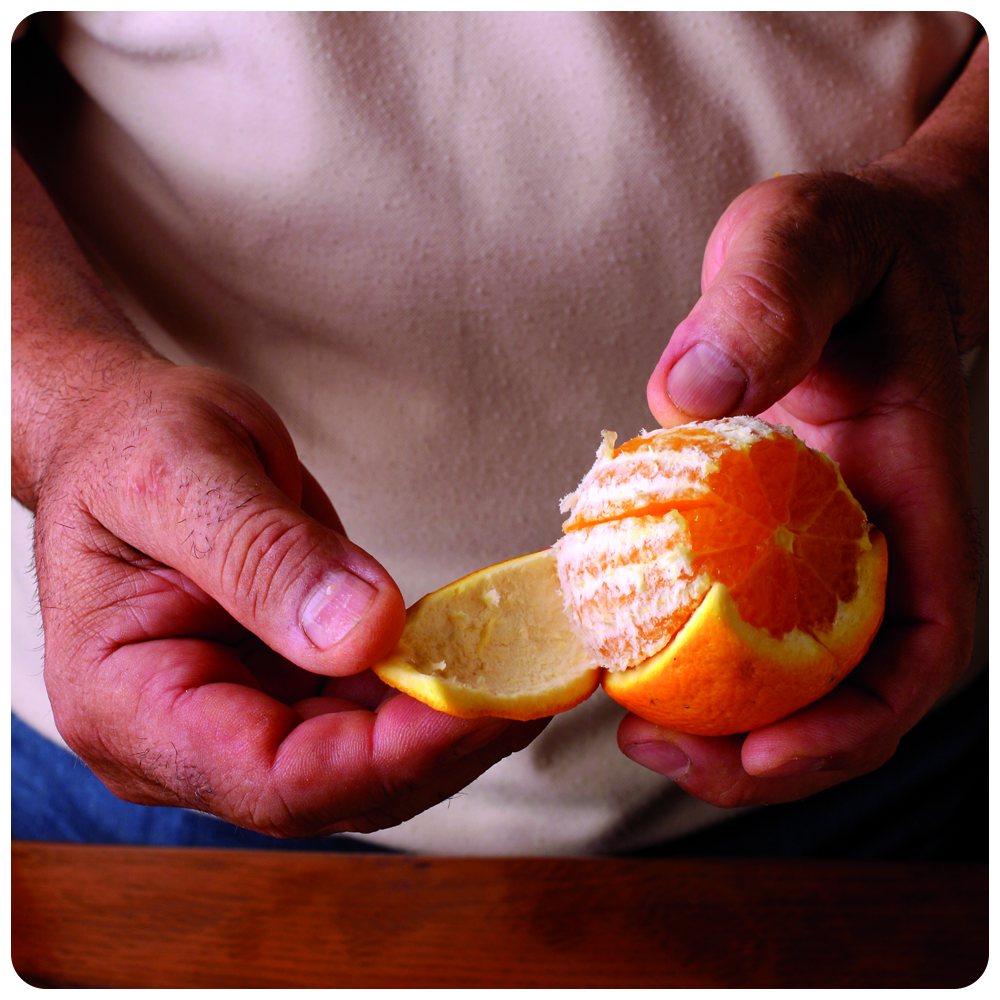 Nothing of the orange is thrown away.
Nothing of the orange is thrown away.
The blood orange, a fruit for the table. It can be peeled and eaten fresh after meals, juiced for breakfast or a snack, and it is very adaptable for the preparation of interesting recipes. All the aspects of the tree and the fruit are important, even the twigs, the blossom, the leaves, the flesh, the juice, the pips, right down to the rind.
So many family recipes you could make at home.
With Orankitchen, we have made the blood orange into a champion ingredient. The rind is perfect for preparing drinks, liqueurs, candied fruit, jams and syrups. The flesh can be made into cakes, sorbets, brioches, sweet and savoury sauces. The juice can flavour side dishes, meats, fish and vegetables.
The alternative uses of the orange are infinite; all to be explored. Considering some of the aromatic parts of the orange as to be discarded is a real waste, such as the pips and the rind.
If it is edible, the peel can be eaten. Moreover we have learnt from our grandmothers to use what is commonly considered waste to perfume our homes, the essential oils stored in the peels and seeds are sought after by the cosmetics and sensory design industries.
Their intoxicating and vivacious perfume, the shape and consistency of the rind and of the pips can be exploited creatively. Take advantage of them naturally or transform them, make good use of them, create ideas and citrus objects.
Blood orange juice; fruit in its pure state.
Oranfrizer, in addition to fresh blood oranges, also produces juices available 365 days per year. Juices know no limits and can be exported to any country of the world.
Some cannot find the time to consume fresh fruit during a meal. At times, a frenetic life style can be conditioned by healthy habits. At others, we seek a product which is nutritious but also easy, convenient and speedy to consume, and to satisfy so many requirements one must give up all that nature can offer us.
Oranfrizer, in order to facilitate the consumption of blood oranges, also produces 100% natural juices. Our juices do not come from concentrate; they have no additives or preservatives or added sugar. Only pure fruit, naturally juiced and pasteurized (as with fresh milk) to preserve over time the organoleptic and nutritional characteristics. Indeed, our juices are fresh and perishable, so are always kept at a temperature of 0-4 °C
oo often, what is called “fruit juice” is something else altogether. We suggest that you always read the label on all products, including ours. It is useful for getting to know the nature, the composition and the provenance.
On the label of our juices, you will see one ingredient only, the natural juice of blood oranges. You will see that to make our juices, we only use oranges made in Italy. We select them exclusively amongst those grown here in Sicily, on the slopes of out Mount Etna Volcano.
